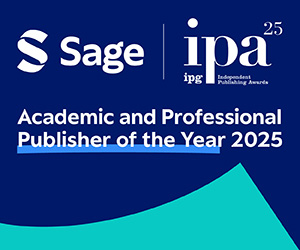Getting Explicit about the Implicit
A new study in Organizational Research Methods (ORM) explores the unintentional, spontaneous and sometimes unconscious “implicit” measures that influence the thoughts, feelings and behaviors of employees at work.
“Getting Explicit About the Implicit: A Taxonomy of Implicit Measures and Guide for Their Use in Organizational Research,” published on May 4, 2012 in ORM, was authored by Eric Luis Uhlmann of HEC Paris; Keith Leavitt of Oregon State University; Jochen I. Menges of Judge Business School; and Joel Koopman, Michael Howe, and Russell E. Johnson, all of Michigan State University. To view other OnlineFirst articles, please click here.
An excerpt from the paper:
Organizational researchers have largely worked under the assumption that the attitudes and behaviors of organizational actors are deliberate enough to be reportable and bound to conscious control. In recent years, however, social and cognitive psychologists have shown that many behaviors result from processes that operate with limited conscious control and in some cases entirely outside conscious awareness.
Dr. Leavitt kindly provided the following background and insights.
What Inspired You To Be Interested In This Topic?
A great deal of organizationally-relevant behavior is theorized to occur outside of conscious control and awareness, but ironically, much of our research relies on self-report (survey) methodology. A multitude of implicit measures developed by social cognition researchers have been widely used to capture processes people aren’t able or willing to report. However, implicit measures are seldom used in management research, despite their obvious application for many of our areas of inquiry. The authors came out of different research “lab groups”, and were trained using different approaches to implicit measurement. We decided to collaborate and synthesize these approaches to implicit measurement that we and others have used to create a cogent toolkit for organizational scholars. In doing so, we have created the first “functional taxonomy” describing these measures, which makes the strengths and weaknesses of each approach much more easy to understand.
Were There Findings That Were Surprising To You?
Our paper was not empirical, so there was little surprising in the way of results. However, in completing the necessary literature review for this paper, and from discussions with colleagues in presenting earlier versions at the Academy of Management Annual Meeting, it became increasingly clear to us the potential impact implicit measures might have in management scholarship. The applications to date, ranging from implicit race bias in customer satisfaction ratings to reactions to justice violations, have been well-received and have advanced the fields of management and organizational psychology. Also to our surprise, many IO/OB scholars seem to have at least a cursory familiarity with implicit measures, but often find the barriers to entry too daunting to undertake in their own research. Our goal with this paper was to greatly reduce both the practical and theoretical barriers that have kept IO/OB researchers from considering them in their work.
How Do You See This Study Influencing Future Research And/Or Practice?
We’ve tried to greatly reduce the entry costs for researchers interested in using implicit measures and provide directions for future investigations using these approaches. Further, we provide theoretically meaningful questions that researchers might attempt to answer using implicit approaches. Importantly, creating parallel implicit measures for all existing constructs is probably not an especially fruitful pursuit–there are many constructs which are best captured using direct/explicit measurement. However, there are also many organizationally-relevant constructs where social desirability, self-deception, or taken-for-grantedness make self-report measures a poor match for what the researchers are trying to study. We believe we’ve provided a useful guide for deciding when implicit measures are necessary, which ones are most appropriate for the research question and study design, and considerations for what relationships between implicit and explicit (self-report) measures might mean for a particular construct.
Read the entire article here. To learn more about Organizational Research Methods, please follow this link.
Are you interested in receiving email alerts whenever a new article or issue becomes available online? Then click here!






























































































